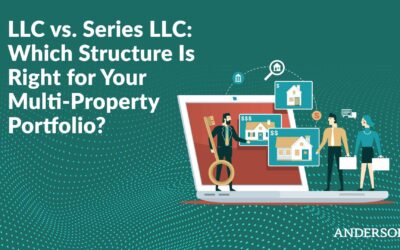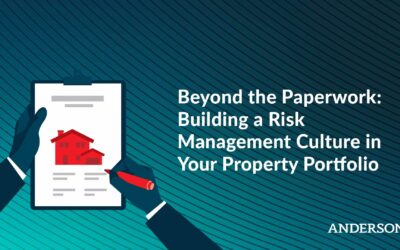In this episode, Clint Coons, Esq., speaks with Richard Advani, VP of Mortgage Lending at Guaranteed Rate. You’ll hear about specific loan and mortgage products, tactics, and insider information to help real estate investors looking for advantageous methods to invest in or buy primary homes and investment properties.
Highlights/Topics:
- Intro and background – Richard Advani
- DSCR loans – the details
- Other loans – assuming the seller’s mortgage
- Can you target these assumable loans through public information?
- Once the seller transfers, they are off the hook
- Equity – what to look for in loan products
- Credit checks on multiple property loans
- Marriage and mortgage qualification – what’s the ideal set up?
- Income vs. asset-backed loans
- Liabilities and LLC’s
- ‘Forward commitment’ builder programs
- Contact Richard for a no-commitment consultation
Resources:
Tax and Asset Protection Events
Full Episode Transcript:
Clint: Have the interest rates got you concerned and put you on the sidelines when it comes to buying a personal residence or investment real estate? If so, then you’re going to want to watch this video, because I’m interviewing Richard Advani of Guaranteed Rate. He’s going to talk to us about the strategies you can be using right now to get into real estate without having to show income, low rate loans to buy investment real estate, and even lower rates to buy a personal residence. All right, let’s get started.
... Read Full TranscriptRichard, thanks for joining us. Why don’t we start off? Tell us a little bit about yourself and your company.
Richard: Absolutely, Clint. My name is Richard Advani. I’m based here in Southern California. I am a mortgage lender. I’ve been in the mortgage business for 18 years now. Very early on in my mortgage career when I was quite young, I purchased my first out-of-state investment property and saw how it really was a good means to increase cash flow and build wealth.
I started focusing my lending business on working with investors, tailoring products to suit investor needs. Obviously, fast forward to today, I’ve closed thousands and thousands of investment transactions. With a lot of that hard data, I’ve been able to grow my own portfolio to over 20 rental properties as well.
Clint: Because lending as we know is really important, especially now in this market. There are a lot of investors out there that are just wondering, what is the right product for me? How can I find loans that have lower interest rates?
Maybe we will start off. Can you explain a little bit about those DSCR loans and what they are? And if somebody’s not familiar with it, why should they be looking at that type of loan?
Richard: Firstly, DSCR loans, the full meaning of them is Debt Service Coverage Ratio loan. Basically, what that means in English is the major requirement for these new loans for investors is that 100% of the gross projected rents cover the principal interest taxes and insurance.
Let’s assume that a property rents for $2000 a month, and the PI/TI payment is $2000 a month, that would be a one to one DSCR. Generally, that’s the base level requirement for these loans.
As you can imagine, the advent of these loans into the market three or four years ago was very well-received just because as investors, people were either capped out at 10 Fannie Mae loans. We have a lot of clients, as you do, all your clients that are self-employed, that have lots of entities, and maybe get a little aggressive on their taxes, and they may not qualify.
These DSCR loans take that out of the mix. They’re not income-driven. Also, they don’t have limits on the finance properties. DSCR loans, as you can imagine, is an amazing product. But of course, you pay a premium on the interest rate and fees over a conventional Fannie Mae loan.
Clint: Are there any limitations then as far as the loan size?
Richard: Generally, no. These will go up to about $1½–$2 million, depending on the DSCR investor that we work with. Most clients we’re working with are in that high end range. It would be the $1½–$2 million loan amount for a short-term rental. It covers most everything we deal with.
Clint: If I’m applying for a DSCR loan, what I heard you say is income is really not an issue because it’s all based upon the income generated from the property. A lot of individual investors always think, well, do I make enough W-2? Do I show enough on my 1040? This removes that.
How about the personal guarantee side, because no one wants to be on the hook in case it turns out to be a dog of an investment they bought?
Richard: These loans still do require a personal guarantee. You do have the ability to close in the name of an entity of an LLC—the title that is—but you are still personally guaranteeing the loan. It will still show up on your credit report.
That’s really how they’re able to offer these attractive terms on these loans. Although they’re higher than conventional, a lot of times you’re paying less than a 1% premium to have this loan as an option. It’s a great loan option out there, but it does cost them a little more, of course.
Clint: There’s something else I think that’s important that people should know about. Let’s say that you’re not a real estate investor. Maybe you want to get started in real estate investing, and you’re looking to get into the market with house hacking, which is renting out a room in your house.
The limitation we’re finding right now, of course, is that when it comes to buying properties, a lot of people just can’t qualify because interest rates have gone up. But if they could get into one of those lower interest rate loans that used to be out there, then it opens up a door for them.
What I’ve been told is that you could do an FHA, a VA loan, or USDA, I think is the other one, loan, where you can actually assume the sellers’ mortgage. Can you speak to that?
Richard: That’s a great point. For people unaware of it, make sure you listen loud and clear. For customers that own homes that already have FHA, VA, or USDA loans, those loans come with an assumable feature, which allows the prospective buyer to come in. You still have to qualify for the loan. But assuming you do, the interest rate and the terms of that loan that the seller had, you can basically assume and take over.
As you can imagine, I think 70% of the country is under a 4% interest rate right now. Even if that means paying market value, or paying a little premium over market value to be able to assume this loan with a 3½% or 4% rate, it’s a huge, huge windfall. Where market rates are in the mid-sevens, the payments essentially almost double that or what it is at a 4% rate. That is a very, very good point, a good tip.
Obviously, as you can imagine, there are a lot of people out there trying to find those properties that have those types of loans. It may be a little competitive out there in finding them, but I don’t think the world is aware of what you just said that these loans exist out there, that you can assume someone’s loan into whatever rates they got. A lot of times, it’s going to be under 4%.
Clint: Is there any way that you know, where you could say research title and discover whether or not that’s an FHA loan or a VA loan that’s on the property, so I could do some background search before I start putting in offers, and that way I can target specific properties directly?
Richard: Yes, that type of information is public information. Generally, if you’re able to pull a title report on the property, you would see a lot of times whether the loan is FHA, VA, or conventional. There are definitely means to consolidate the search field to the properties that meet that requirement and have those types of loans.
Clint: I think it’s really important. If I was someone in that position, I’m looking to get started using a house hacking strategy. Since I have to treat it as my personal residence to assume that loan, I would definitely be looking for that and then bringing that up in the conversation with the seller.
I think you stated, hey, maybe you give them a little premium, because they’re going to have to go through some steps, I assume, to transfer that loan over to you. There’s always that fear that they’re still going to be on the hook, but they’re not going to be on the hook once they transfer the loan to you?
Richard: No. Once the seller sells the property and you assume the loan, it has nothing to do with that seller anymore. You just have that very, very low interest rate, of course.
As you mentioned, you know where incomes are and where housing and rates are. A lot of people can’t enter the housing market. Even if they make $150,000 a year, it’s not enough. These assumable loans are a great way to obviously have houses become affordable and now participate in the housing market.
Clint: Great. All right, now let’s switch back to the investor. If I’m an investor, and like you, you have 20 properties, and I’ve been holding on to these properties, I have a lot of equity in them, and I want to tap into that equity and use that equity to start buying more real estate, one of the challenges that people run into a lot is that they think they have to attain one conventional loan, one cash out refi in each individual property.
What do you say to the investor that says, hey, I just want to put up five properties as collateral, let’s say between those five properties, I have a million dollars in equity? What should I be doing? What should I be looking for?
Richard: Cross collateralized loans are a great product for the right situation. For the longest time up until probably seven or eight years ago after the crash, we were really limited to offering just these conventional Fannie Mae up to 10 loans to an investor. After that, probably six or seven years ago, these cross collateralized loans started coming out and started being an outlet for people over 10.
They were very, very popular because they allowed cross collateralization across. They allowed it and almost required it. For new acquisitions, they required you to be purchasing 3–5 doors for $300,000-$500,000 at a minimum. What we’ve seen is with the DSCR programs coming out, they’ve really replaced the need for those cross collateralized–type loans.
They do offer benefits as you mentioned there as well, getting one loan that encompasses all your properties. However, there’s a little bit of a misnomer that you’re going to save because of that.
Generally, you still are, of course, paying the title fees, escrow fees, the recording fees, and the appraisal fees for each of five properties in the cross collateralized loan. Where you would think you would say it is typically on the lender and the processing fees given that, once again, you’re getting one loan instead of five.
Generally, when we’ve seen those, that’s not the case because they’re processing five loans, as you can imagine. Their lender fees, their processing fees are a lot higher than it would be with one loan transaction. It’s important to analyze each deal individually. I’ve seen a big drop in people utilizing those cross collateralized loans once again with the advent of these DSCR loans.
If you’re an investor with 50, 80, 100 properties, for you, there’s a time perspective in there and a time factor. It probably wouldn’t be less time in getting one loan over 20 or 30 properties versus getting 20 or 30 individual loans. That’s where you would really see the benefit in this market. It wouldn’t be better terms or lower fees. It would be more of a time savings for that larger investor.
Clint: If I was going to get (say) five individual loans cash out, so you can do a DSCR cash out on your properties?
Richard: Yes, absolutely.
Clint: Okay. Would that be five credit hits then, where they do one per loan? Versus if I just got one loan, there’s only one credit hit?
Richard: There will still only be one credit check. At least with us as a lender, we’ll use that same credit report generally for up to four months. That’s whether the transactions are current or not.
An investor may come in five properties at once, once again, one credit check. Then two months later, they may say, hey, I’ve got another round of three properties. Guess what? We’re going to still use that same credit report that we pulled two months prior. There’s not really a difference or an impact there.
Clint: All right, I’ve heard you keep talking about 10 properties. I don’t think a lot of people realize that with conventional loans, the Freddie-Fannie stuff, that there is a cap on the number of properties that you can borrow for. You’ve said 10. What is one of the strategies that you typically recommend to investors who are coming in and they’re starting to build their portfolios when it comes to borrowing against real estate or to buy property?
Richard: We aren’t aware of Fannie Mae, Freddie Mac have a cap of 10 financed properties per individual. The reason I mentioned individual is, there is a strategy to maximize that 10 properties to make it 20 properties or to double it. That really involves dividing and conquering with your spouse and potentially your children, which we can get into a little later here.
Let me back up a little. Conventional wisdom, typically when people get married, you go joint on everything. You can join the bank account, you could join on the mortgage for the house, you could join on the cars. Really, that’s frankly the wrong thing to do, especially as it relates to mortgage qualifying.
If the clients employed a strategy, where the primary wage earner typically, one of the spouses is making most of the money, the strategy is to put most of the debt, if not all of the debt, on that primary wage earner. When you’re buying a primary home, assuming spouse number one is making most of the money, and assuming they’ll qualify, if you want to put that mortgage on just their name. You want to put the car loans, credit cards on just that primary wage earner’s name.
The reason why it and what that allows is the wage earner number two, the spouse that may work part time, may bring in $15,000–$20,000 a year as a teacher or even working at the family business, it allows that spouse now to also participate in the market and also buy 10 properties independent of spouse number one.
The way that works really in qualifying for a mortgage is really a component in the debt-to-income ratio. You don’t need to make a lot of money to buy investment real estate and to qualify for a mortgage. However, what you do need to have is a very minimal debt loan.
Let’s take that example of spouse number two. Spouse number two makes $20,000 a year. She has no car loans under her name. She’s on the title of the primary home as an owner, but she’s not on the mortgage. Maybe she has a small credit card. What is her debt load monthly?
No housing expense. Let’s call it $100 a month on a credit card payment. What is her income? Even at $15,000 a year, roughly $1200 a month. What is her debt-to-income ratio if her bills are only $100 a month? It’s negligible.
Generally, we can go up to a 50% debt-to-income ratio. That begs the question, well, what about the property she’s buying, this spouse number two, based on this $12,000 a month in income? We have the ability to use rental income on this new purchase to offset the debt.
Essentially, the new property that spouse number two is going to purchase is effectively going to cover the mortgage payment, the rent. That’s the zero hit to that person’s debt-to-income ratio.
Basically, what that means is spouse number two enters that transaction with a 2% debt-to-income ratio. Mind you, we can go up to 50%. She acquires this new property, uses the rental income to offset the debt. Let’s call that a breakeven payment. She leaves the transaction after that first acquisition, also with a negligible debt-to-income ratio.
Once again, the beauty is given that we can go up to 50%, we can rinse and repeat. We can take that spouse number two up to 10 properties as quick as she’s comfortable moving, as quick as the family’s comfortable moving. The beautiful thing in terms of security as well, is, when spouse number one’s buying his 10, spouse number two can still be on title of those properties. We’re just saying not to be on the loan and vice-versa.
When spouse number two buys the next 10 properties, spouse number one is also on the title as an owner of those properties. As you can imagine, this is a huge, huge thing. If you do go joint on your mortgages, Fannie Mae will count that against each of you. If you join the traditional path, you buy eight homes, guess what, each of you have eight finance slots filled versus, of course, going jointly.
That same logic applies to your children. You may have a child who’s 20 years old, who works for the family business, part-time while he’s going to college. Guess what, if he has no debt, but he has an income coming in, his debt-to-income ratio is also negligible.
We can help that adolescent son of yours or daughter be able to acquire investment, real estate as well. It’s a very small detail but a very, very powerful detail that can help get the best financing when you’re trying to grow your portfolio.
Clint: What happens if the spouse doesn’t have an income?
Richard: If the spouse doesn’t have an income but she is on title of the primary home as an owner or even on the mortgage, we can actually qualify that spouse for a DSCR loan, and that’s what’s great. We almost have a product for every situation. You need to have a good credit history, you need to have a good credit score, and you have to have money for the down payment.
Even if that spouse was not working, and let’s say she went the conventional path, you and I got to them too late. They bought their primary home six years ago, they joint, they bought a couple of rentals since, and now they’re at five finance properties. They only have five left if they go the conventional path.
You could still divide at that point, husband and wife. If the wife or husband in that example didn’t have an income, then they could utilize the DSCR loan product and still go buy their properties.
Clint: It sounds like a strategy here then for someone who’s listening to this would be if you have a spouse that’s not working, and you have the ability to create income through a side gig, or maybe you’re managing your own real estate, I would probably recommend then that they set up a C-corporation, make money through that C-corporation either through the side gig or through the management of real estate, have it owned by the working spouse, but pay the non working spouse a W-2. Now you’ve created the income for the non-working spouse so they can qualify for those 10 properties. What do you think about that strategy?
Richard: I think it’s a great strategy, and they’ll qualify getting that conventional financing. As per our requirements, a person can show an income regardless of where it’s coming from, even if it is managing the properties they have, then that’s an income that works.
I think that is a good strategy, because it’s very easy for someone that has four, five, six, or how many properties to start paying themselves, or for example, their spouse’s management fee to outmanage that portfolio. And that is income we can use.
Clint: With those loans, the Freddie-Fannie stuff, the conventional stuff that you have the 10-pack on, those are income-driven. Do they also have the loans where it’s an asset security–based loan, where if I have a portfolio in the stock market (say) of $300,000, can I still qualify for that type of loan based upon that portfolio or the income it generates?
Richard: We do offer asset-backed loans. They’re mainly used more for primary homes, just because once again, that DSCR product is so aggressive and so attractive that it negates any of these other programs.
However, DSCR, as you can imagine, is for investors. Where we see people using the asset-backed loans more is on primary homes, because once again, you can’t use the DSCR loan for a primary home. However, there would be no use on a rental form to use an asset-backed loan, because the terms and all reality would be worse than that of a DSCR loan.
Clint: If I have (say) five loans on five different properties that I took out my own name, and I transfer those properties into a limited liability company that I’ve set up, and my LLC agrees with me that it will cover the loan, it’ll assume the loan, and make all the payments, and when I submit a financial statement to obtain a new loan, I don’t need to list those as obligations that I currently have since my company has agreed to cover that obligation. What are your thoughts on that?
Richard: Generally, that mortgage would still be in the individual’s name.
Clint: Sure it is. Yeah, but on that financial statement that you’re submitting?
Richard: In terms of underwriting guidelines, how we would look at it is, they probably would not be able to use that income for qualifying.
Clint: You wouldn’t be able to use the income?
Richard: You won’t be able to use the income initially. Typically, it just depends. If the properties are owned as an LLC, as a pass-through entity, and they still pass through their individual tax returns, then we can take that income at face value.
However, if the business is filing its own returns, let’s say it owns multiple properties, typically, they’re going to want to see the established history of that business to use most of that rental income. We do have the ability to review that on a case-by-case basis and still add the rental income, assuming it was just a liability structure change.
Clint :What am I here it is this. If I had a disregarded LLC that doesn’t file a tax return, all the income flows down to me, and I transfer my real estate into that LLC, and it has a $2000 a month mortgage payment, and my LLC agrees to assume the loan, when I’m completing my financial statement, and I’m listing out how much income I generate and I say, well, I generate $24,000 a year in passive income from real estate, but I have no liabilities, and I put zero liabilities associated with that, because my LLC’s assumed that, does that work for filling out the financial statement? I’m just trying to say, hey, so I can look better for the underwriting when I submit it.
Richard: No, it wouldn’t, because the underwriter would still see that obligation tied to your personal credit. It wouldn’t offer any benefit other than asset protection. It wouldn’t necessarily be a negative, either, because assuming it’s a pass-through, we can still use the income on it. I think we spoke about this briefly in the past, but Fannie Mae as of about three or four years ago, and Freddie Mac, they actually now do allow transfer of properties after closing to single member LLCs and entities.
For the longest time, as we’re aware, they did not allow it. People still use to do it in the 5000 loans that I’ve closed. I would say a good portion of people still would transfer properties to an LLC. In my career, I’ve heard of two people getting popped. Basically, they got a letter stating, hey, we noticed you transferred to an LLC, you’ve got 90 days to transfer it back to your personal name or pay off the loan.
As mentioned, as of about three or four years ago, that has changed. You’re actually allowed now to do it, which is good. It’s a good sign for investors that the government, Fannie, Freddie, realized that transferring to an LLC is an asset protection measure. Once again, they do allow it now.
Clint: All right, now I want to get to the thing when it comes to being an investor in finding low interest rate loans right now, because everyone will tell you, hey, there are no low interest rate loans or real estate investors. But as you know and as you told me, they’re out there. There are 5% loans out there. You just need to know where to look to find these deals. I’d love for you to share with us how a real estate investor in today’s market can find a 5% loan to buy investment real estate.
Richard: I know it sounds unbelievable, but it exists. I am actually helping set up a lot of builders with those loans. To get into some details, this loan product is called a forward commitment program. The builder and the developers, the one that needs to initiate it, will cover some details here broadly. Basically, this program has been around for 15-plus years. Prior to it being completely changed earlier this year, it wasn’t a very popular program with builders because it had carrying costs, and it was very expensive, and the terms just didn’t make sense.
Basically, what this program allows builders to do is, builders can incentivize a block of money. They can say, hey, I’ve got $3 million worth of closings coming up in the next 90 days, and I want to incentivize the rate on that $3 million for my prospective buyers. By incentivizing the rate, essentially what these builders are doing is they’re paying points just like we do on the front end as consumers, as investors. However, these builders are paying a lot of points and putting up a lot of money to drop the rates on these investment properties.
As you can imagine, obviously it’s a good business move for them, because as investors, we’re looking for cash flow. The builders are selling based on the cash flow of the property. As you can imagine, going from the market rates of 7½% rates as low as 2% lower, so 5½% has a huge profound impact on the cash flow.
This program is out there and is being utilized by a lot of builders, developers. The customers, the clients, us as investors, of course, need to find builders and developers that are working with this program. You can’t call in and just get this program. It needs to be set up by a builder, and the funds need to be incentivized by the builder.
The great news, though, is you as the end client, me as the investor, we’re just coming into a conventional 30-year fixed. There’s nothing special about it. It’s not a step down program or step up program where the rate increases. It’s fixed from the get-go. The only difference is the builders paid 5, 6, 7 points to be able to bring your rate as an investor down very, very, very dramatically.
We’re obviously in a unique position in the market right now. Rates are high, and sellers are feeling it, although real estate is still robust. Prices have still gone up nationally over the last year. Everyone needs to realize that it is sitting on the fence, it is waiting for rates to drop. Firstly, not going to happen probably in the very near future, although it is expected in the next year.
What is going to happen when rates drop? Everyone who’s been sitting on the fence, all your friends who are your age, everyone’s going to go buy. What’s going to happen to house prices? They’re going to accelerate, and they’re going to continue going up.
One thing that we’ve been telling all of our clients, of course, is there is inventory now, there is an opportunity to participate in the housing market, and you can refinance in the near future. With this program, this absolves all those concerns for people who are waiting for rates to drop into the five, waiting for affordability to increase. This does that for you.
However, there’s not going to be a herd of other people trying to go buy houses like there will be when rates drop. My advice to you guys out there is, if you hear rates advertised in the fives for investors or even for primary homes because this product is available to primary homebuyers as well, definitely inquire more about it because this program is huge.
The builders are putting up a lot of money to move their inventory, and it’s going to get you to a rate which, frankly, the best case scenario for rates that you hear the pundits saying in the next 1–3 years is, rates move back to the 5% range. Guess what, you can get that today on properties available with select builders and developers.
Clint: Is there anything else out there that if I’m an investor, I should be aware of when it comes to financing my real estate that you think is really important right now in 2023?
Richard: There are no other products out there besides the products that we covered, the DSCR, and this builder forward commitment. The biggest thing I tell people is, look, the reason why we’re in this elevated housing price, and I don’t know if it will elevate it, because the norm now, is supply and demand. Nationally, we’re short 5–6 million homes, and that number goes up every year.
A lot of people get into debate of, oh, well, hedge funds and investors are buying houses. Regardless of who’s buying the house, regardless of it’s you and me, a hedge fund, or a primary home buyer, there are not enough roofs over heads. Even switching interest rates as high as they’ve been in 20-plus years, mortgage payments have doubled from two or three years ago on the same price house, guess what? House prices are still strong, they’ve gone up, real estate remains robust.
As hard as the Fed is trying with raising these rates, they still can’t cool housing down because we have a supply and demand issue. That’s economics 101. Personally, I’m continuing to grow my portfolio. I know that I’m marrying the property, but I’m dating the rate, and then you throw in some of these good programs out there, the builder forward commitment, the DSCR.
Think of the DSCR loans. When they first came out, they scared me a little because I’m like, wait a minute, what do you mean no income documentation? Are we going back to where we were? Then you look a little deeper and you’re like, okay, well, these people are putting 20%–25% down. And they have to meet requirements that cover the payment.
I started thinking. I’m like, okay, well, the people who are actually putting this money up for these DSCR products—the banks, the hedge funds, wherever it’s coming from—they have a lot more information and a lot more data than we do.
To them, having 20% down, and the fact that the rent covers the mortgage payment is enough security for them to be your partner in that deal and put down 80% of the money when you’re just putting a 20% or 25% down payment, really showed me how robust the state housing is and how robust it is going to be moving forward as well.
At the end of the day, if you default on this loan, then guess what? That property is going to be added as a rental to the portfolio, probably of the hedge fund. That’s enough security for them to invest in real estate and be the majority partner in a deal.
It’s important to know and realize that when you’re investing in real estate, you’re putting 25% down. Banks put 75% and if they’re believed in the transaction as a majority partner that gives some semblance of confidence.
Clint: Hey, I wanted to thank you for taking the time to come on here and share with us everything that’s going on with regards to lending and what investors should be looking out for.
If somebody wants to get a hold of you and work with you on putting together some loans for investment real estate, I assume you can help people throughout the United States?
Richard: Yes, we are licensed nationally. Obviously, it’s just primary homes investors, DSCR, conventional, and beyond. My website is richardadvani.com. I’ll put my contact information down in the body.
If anyone needs anything, we’re not the type of lender that wants to pull your credit, get an app, and get your firstborn. We’re here to have conversations. Being successful in real estate does involve planning, getting information, and getting that early on. Whether you want to do something in a week, a month, a year, feel free to utilize us as a resource.
Clint: Richard, thank you, sir.
Richard: Thank you, Clint.
Clint: Take care.






